Dendrosenecio kilimanjari is a distinctive plant species native to Kilimanjaro's iconic mountain slopes. It grows up to 10 m (32 f) tall, with thick, upright stems and a crown of sturdy green leaves at the top. This plant is a semi-official emblem of Kilimanjaro, which you may see in many trekkers' pictures. These plants, found nowhere else on Earth, are endemic to Mount Kilimanjaro.
In this article, we will tell you about the amazing Dendrosenecio kilimanjari. You will also learn about the top spots to see and take photos of this unique Kilimanjaro plant.
These plants are common on the mountain slopes here. It speaks to how well they adapted to the high-altitude environment between 2,800 and 4,000 meters above sea level. Evolution equipped the groundsels to thrive in those harsh conditions.
Disclaimer: While I don't have a formal degree in Botany, I've lived in Tanzania for over eight years and have been a part of many Kilimanjaro climbs. That's where I learned about the unique plants here, like the Dendrosenecio kilimanjari. My passion for these plants has led me to read lots of books and learn everything I can about them.
Proximity to both the equator and the Indian Ocean, coupled with huge altitude variations, make the flora of Kilimanjaro truly diverse, unique, and beautiful. If you want to learn more about Kilimanjaro plants, check out "Adventure Tourism: Environmental Impacts and Management" by David Huddart and Tim Stott, as well as "Alpine Plant Life" by Christian Körner. These books helped me a lot, and they're great for anyone interested in the plants of Kilimanjaro.
Three names of one plant
Dendrosenecio kilimanjari has been given various names over time. It is colloquially known as Kilimanjaro giant groundsel, while the scientific name is Dendrosenecio kilimanjari. In this article, we use these terms interchangeably to talk about this amazing species from Kilimanjaro.
Historically, this plant bore the name “Senecio kilimanjari”. However, it underwent a recent botanical reclassification placing it under a new genus, Dendrosenecio. It aligns it more closely with its distinct lineage. Even though the names have changed, they still describe the same plant.
What Dendrosenecio kilimanjari look like?
A giant groundsel is a robust assembly of trunks and branches. In stature, they are often compared to a small tree. As these plants grow older, they develop a large spherical mass of leaves at the top. The leaves are strong and packed tightly. This helps to keep the center safe from the cold nights at the altitude. Groundsels grow very slowly, so many of those towering giants are hundreds of years old!
At the same time, the delicate flowers that grow from these giant groundsels are a stark contrast to their unusually shaped robust bodies. Many of our hikers find it particularly endearing.
How tall are giant groundsels?
These plants grow at an incredibly slow rate, a mere 3-5 cm a year. The harsh mountain conditions, with freezing temperatures, make it difficult for them to grow faster. Despite this modest annual growth, some specimens reach towering heights of up to 10 meters. Most of them, however, are between 2-3 meters high.
These endemic species are perennial forms and live hundreds of years. The tallest giant groundsels have likely been there since before the first recorded climber, Hans Meyer, summited Mount Kilimanjaro in 1889. We like to believe that the first person who ascended Uhuru Peak saw roughly the same kind of flora that we can see today on our hikes.
A testament to the fresh air of Mount Kilimanjaro
The Dendrosenecio often has light grayish-green lichens growing on it. These lichens become an almost permanent fixture on the plant. They hand in clumps resembling white hair. This tells us a lot about the pristine alpine environment of Mount Kilimanjaro. These lichens live only in clean, pollution-free conditions at high elevations. Their presence on Dendrosenecio serves as a natural marker of Mount Kilimanjaro's fresh air.
A surprising relative of Dendrosenecio kilimanjari
Surprisingly, the giant groundsel shares a close relationship with the common groundsel. It is a widespread plant found throughout East Africa and beyond. The sheer size of the giant groundsel makes it hard to believe it's related to a much smaller plant, a common sight in fields and gardens worldwide.
Where to see Dendrosenecio Kilimanjari on your Kilimanjaro climb?
The Kilimanjaro climb takes one through several distinctive vegetation zones. Each has its unique ecosystem and altitude range. There is no strict division: the zones overlap and smoothly blend into one another.
The journey begins in the cultivated zone, at the mountain's base, at an altitude of about 1,800 meters. There, one may see farms and villages with crops like coffee and bananas. All trailheads are above this zone. You'll see them while riding to Mount Kilimanjaro on our Altezza Travel vehicles.
Between 1800 and 2800 meters lie a montane forest zone. As hikers ascend there, they enter a tropical rainforest on the southern slopes. It is teeming with diverse plants and animals. Blue monkeys and colobuses are some of the amazing animals to see there. The forest on the north slope is largely coniferous, making it feel different. It features a cooler climate and a different atmosphere overall.
The "moorland zone," sometimes called the heath zone, lies between 2,800 and 4,000 meters. The zone has open, windy spaces. Giant heathers decorate the area, making it feel somewhat alien but beautiful. See if you can spot Hebenstretia dentana here. This lovely perennial forms bushy clumps of white flowers up to two meters high.
Beyond 4,000 meters is the low alpine zone, a realm where the air thins and the temperature drops. In this place, there is little vegetation. The land is primarily rocks and ice. It is difficult for most plants and animals to survive in this alpine desert. However, you can still see bright yellow daisy-like plants (Asteraceae) up to approximately 4700m.
Finally, the summit zone, also known as the Arctic zone, rises above 5,000 meters. This is where the majestic "ice cap" of Kilimanjaro crowns the mountain. The conditions here are extreme, with glacial ice and cold winds. It resembles the polar regions more than East Africa. This area is inhospitable to any form of plant life.
The Dendrosenecio Kilimanjari thrives below 4,000 meters. It's where the moorland and lower alpine zones come together, and where the climate is ideal for the giant groundsel.
Why do giant groundsels thrive below 4000 m?
The giant groundsels thrive at a specific elevation on Mount Kilimanjaro. This is where the best conditions for their growth are. Below 4,000 meters, precipitation occurs regularly enough to sustain these hardy plants, providing the moisture they need.
The primary cause of the rainfall on Kilimanjaro is warm, moist air from the Indian Ocean. When the air goes up the mountain, it gets cooler and turns into clouds, causing rain. This process helps rain reach as high as the moorland zone, giving moisture to the local plant life, including Dendrosenecio Kilimanjari.
On rare occasions, one may see giant groundsels outside their usual range. However, they are generally confined to this specific belt where the climate is more temperate. Dendrosenecio kilimanjari can’t survive in the Alpine and Arctic zones due to the freezing temperatures. Additionally, the "solar radiation" caused by the intense sun there is much stronger than in the moorland zone, their usual habitat.
Kilimanjaro routes on which you may see Dendrosenecio kilimanjari
Giant groundsels don't grow on every slope of the mountain. The hikers will encounter these vivid plants on the Lemosho, Machame, and Marangu routes. On the map below you may see areas where you will certainly see them. These areas are on the southwestern and eastern slopes of the mountain.
Lemosho Route
The Lemosho Route begins on Kilimanjaro's western slopes. It is a peaceful and gradual trek, perfect for beginners. Because of these advantages, we often choose this route for our group adventures.
On the third day of the journey, trekkers can see Dendrosenecio kilimanjari. It is visible between Shira 2 Camp and Barranco Camp.
You can also spot them near Cathedral Peak, the highest point on Kilimanjaro's western side. When climbing Kilimanjaro with Altezza Travel, there are acclimatization hikes to this landmark on the second day of the trip. These hikes help climbers acclimate and see the remarkable plants up close.
Machame Route
The Machame Route is another route where the Giant groundsels make an appearance. It begins in the lush tropical forest of the southern side of the mountain. The 7-day Machame route is recommended over a six-day variation for better acclimatization.
Hikers pass through the area where giant groundsels grow on the way from Shira to Barranco Camp. On a 7-day Machame trip this happens on the 3rd day of the trip.
Marangu route
Hikers on the Marangu route on the eastern slope may see the Dendrosenecio near Horombo Camp. The Marangu trail stands out because it uses the same path for going up and down the mountain. This is different from other routes that use different trails. If you're really interested in giant groundsels, the Marangu route is perfect. It goes up and down the same trail, so you can see these amazing plants twice.
Why giant groundsels don't grow on the northern slopes?
The northern routes of Kilimanjaro are Rongai and Northern Circuit. Although many travelers enjoy these trails, you won't see Dendrosenecio Kilimanjari there.
The reason for that is simple: the northern slopes receive much less rainfall than the other sides of the mountain. In fact, according to the 2023 data from the Tanzania Meteorological Authority, the amount of rainfall in the north is five times lower than in the south. The Dendrosenecio kilimanjari is adapted to live where the rainfall is suitable.
Also, these plants require a more humid climate. In the north, it is much drier. The moisture instantly disappears, evaporating at a rate unsuitable for Dendrosenecio Kilimanjari. So, if you want to see them on your Kilimanjaro trek, opt for the Lemosho, Marangu, or Machame treks.
How do giant groundsels survive on Mount Kilimanjaro?
The endemic plants showcase remarkable adaptations to their high-altitude habitats. One of their most notable survival mechanisms is how the dead leaves fold around the base of their stems. This process creates an insulating layer, which protects the core of the plant from the mountain's freezing temperatures. Potentially, they can thrive in an even cooler climate.
Additionally, their stem stores water. It is a vital adaptation for the survival of the giant groundsels. Kilimanjaro's weather can be unpredictable, with periods of drought followed by intense rainfall. The ability to retain water allows Dendrosenecio to maintain moisture even during very dry periods. This ensures that they can continue their slow and steady growth.
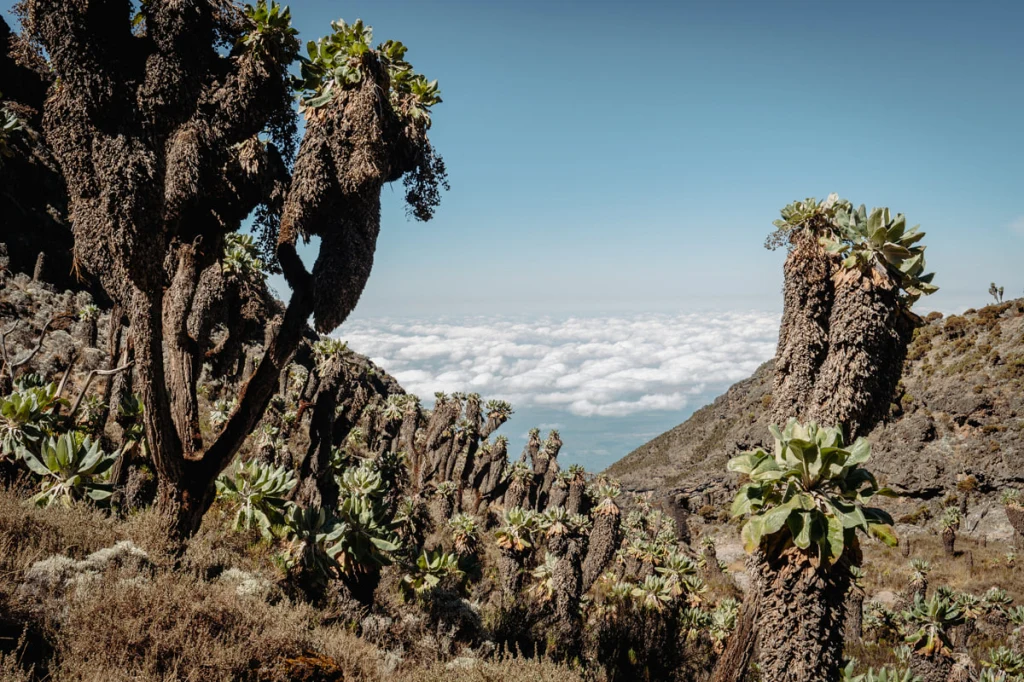
The upright stems of the giant groundsel are another adaptation tool that serves an important purpose. Their vertical growth reduces the surface area exposed to the cold, while also maximizing exposure to the sunlight.
Moreover, shrub-like lichens hang from the branches of Dendrosenecio. It is a symbiotic relationship that benefits both organisms. These pale grayish-green lichens find suitable host trees to grow on. They contribute to the micro-ecosystem by providing insulation retaining moisture for giant groundsels.
Through these specialized adaptations, these flowering plants survive the harsh conditions of Kilimanjaro. Through their ability to store water, insulated growth, and mutualistic relationships with other organisms like lichen, these endemic plants evolved to turn the challenges of their environment into survival advantages.
Other plant life of Mount Kilimanjaro
The giant groundsel is a unique and the most distinctive plant found on Kilimanjaro. But there are many other fascinating plants on the mountain across the different zones of Kilimanjaro. In early African summer, trekkers may see a selection of splendid wild flowers. Therefore, if you have a soft spot for them, plan your trip for the second half of December. I didn’t blunder here— seasons work the other way around in the southern hemisphere. Christmas time is the hottest part of the year here.
Among these is the Red hot poker, or Kniphofia. Its flame-like flowers are easily recognized by their vibrant red and orange colors. The flowering plants bring a warm color to the scenery, especially bright against Kilimanjaro's rocks. You may see Red hot poker when climbing Kilimanjaro through most of the routes.
Apart from the slopes on the Roof of Africa, these flowers are quite common in Tanzania at large. Among other places, you may see them in our hotels Aishi Machame and Brubru Lodge.
Nearby, you can admire the Giant lobelia. These are tall plants that look like guards of the alpine world. Many hikers are captivated by their unique appearance — rosette-shaped clusters and spiky leaves.
There is also the African blood lily, which is a remarkable plant with beautiful stems and equally elegant flowers. The dramatic red blossoms gave the plant its name. The spherical blooms of this plant add a dash of color and exoticism to any trekker's journey.
The beautiful violet Viola emini presents a delicate contrast with its subtle hues and soft petals. The small flower is purple and grows in safe places where they group together. The Viola emini is both beautiful and resilient, thriving in thin air and harsh climates. This summer perennial is a reminder of life's persistence in unexpected places.
Hebenstretia dentata, also known as the "white flowering plant", blooms all summer as a perennial. It grows in bushy clumps that can reach up to two feet in height. In the summer, this plant has beautiful white flowers on tall stems that spread out from the bottom. Pure white flowers form large clusters.
One cannot overlook the Tussock grasses. Expansive patches of these grasses sway in the alpine breeze. The sturdy clusters can survive in the tough mountain climate and are important for the moorland's ecosystem. They give shelter and food to different mountain animals.
Another unique plant here is the beautiful flower Impatiens kilimanjari. This botanical wonder grows in vibrant colors of red and yellow. It has tube-shaped flowers that are about an inch long. Typically, you may spot them along the trails on the mountain's southern slopes.
The yellow-flowered Protea kilimandscharica is a standout species on Kilimanjaro. The flowers are big and shaped like bowls. They have bright colors and grow in moorland and alpine areas. These strong shrubs have thick leaves and tough flowers that can handle the changing temperatures in the mountains. The yellow blossoms stand out against the greenery and support various wildlife like insects and birds.
Together with Denrosenecio kilimanjari, these vivid plants compose the tapestry of Kilimanjaro's vegetation. As you climb the African peak, you'll discover more fascinating species along the way up until the alpine desert, where one will see hardly anything, but porous rock and stones.
Our professional Kilimanjaro guides are experts in the flora and fauna of the mountain. They will be delighted to share their knowledge with you. Book a Kilimanjaro climb with Altezza Travel and prepare for your epic adventure!
See you in Tanzania!
All content on Altezza Travel is created with expert insights and thorough research, in line with our Editorial Policy.
Want to know more about Tanzania adventures?
Get in touch with our team! We've explored all the top destinations across Tanzania. Our Kilimanjaro-based adventure consultants are ready to share tips and help you plan your unforgettable journey.















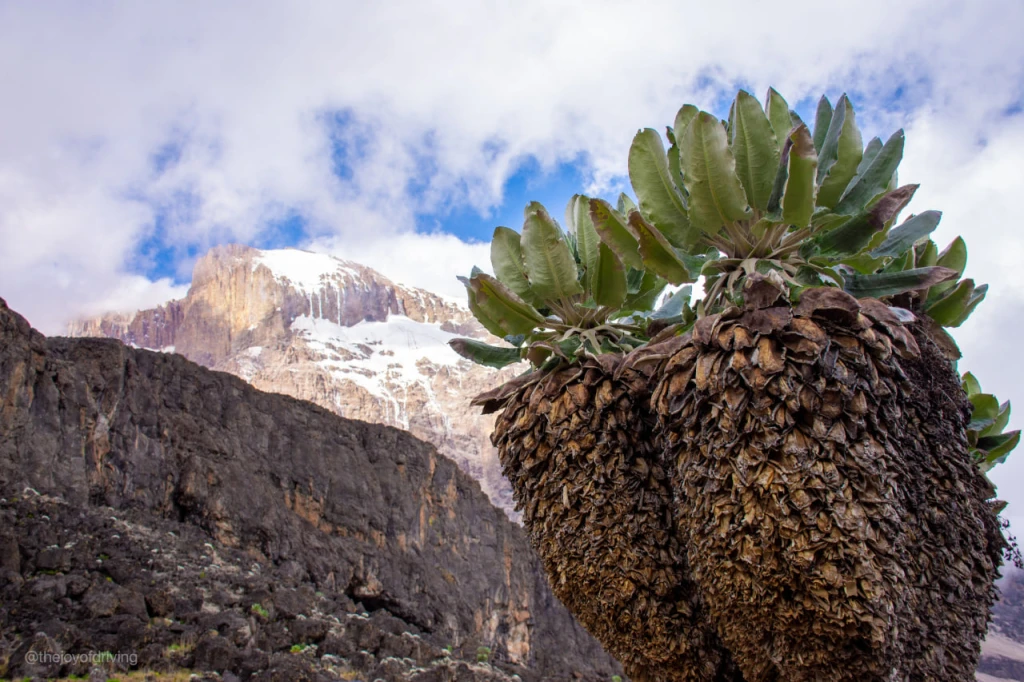

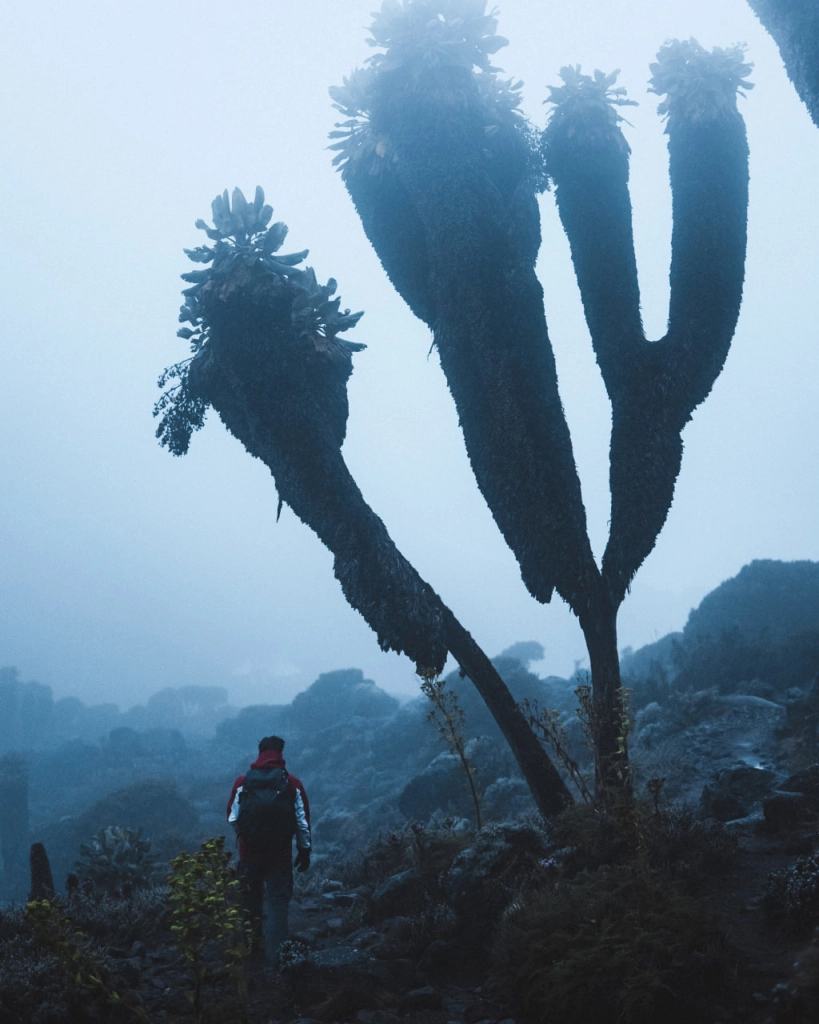
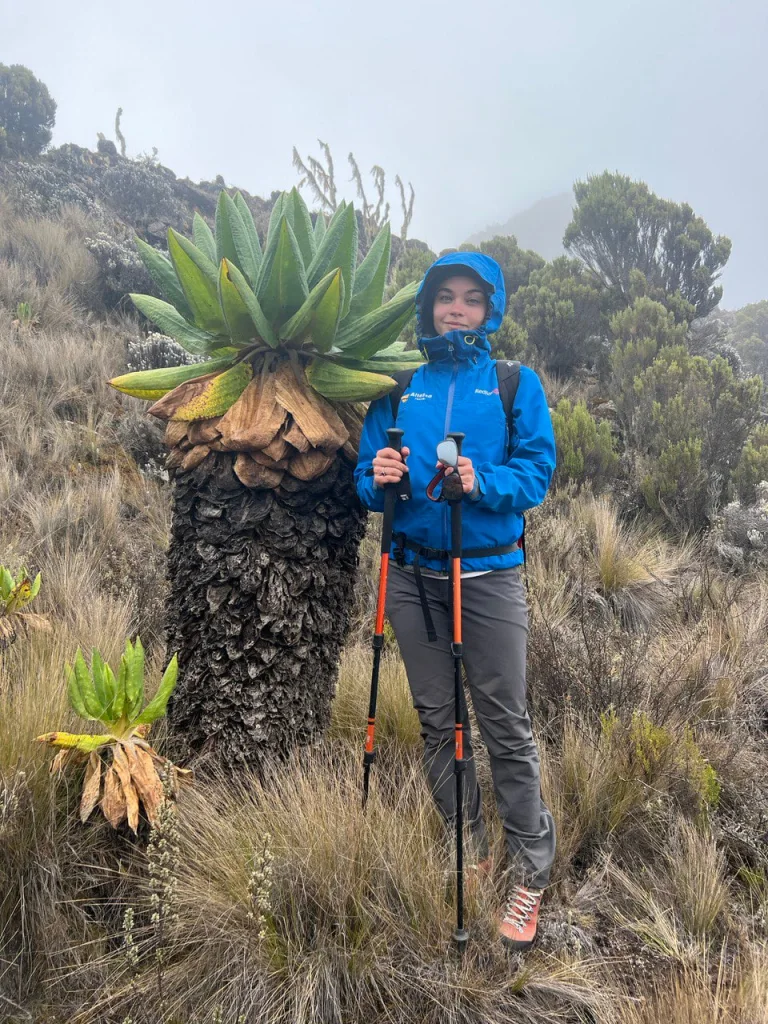
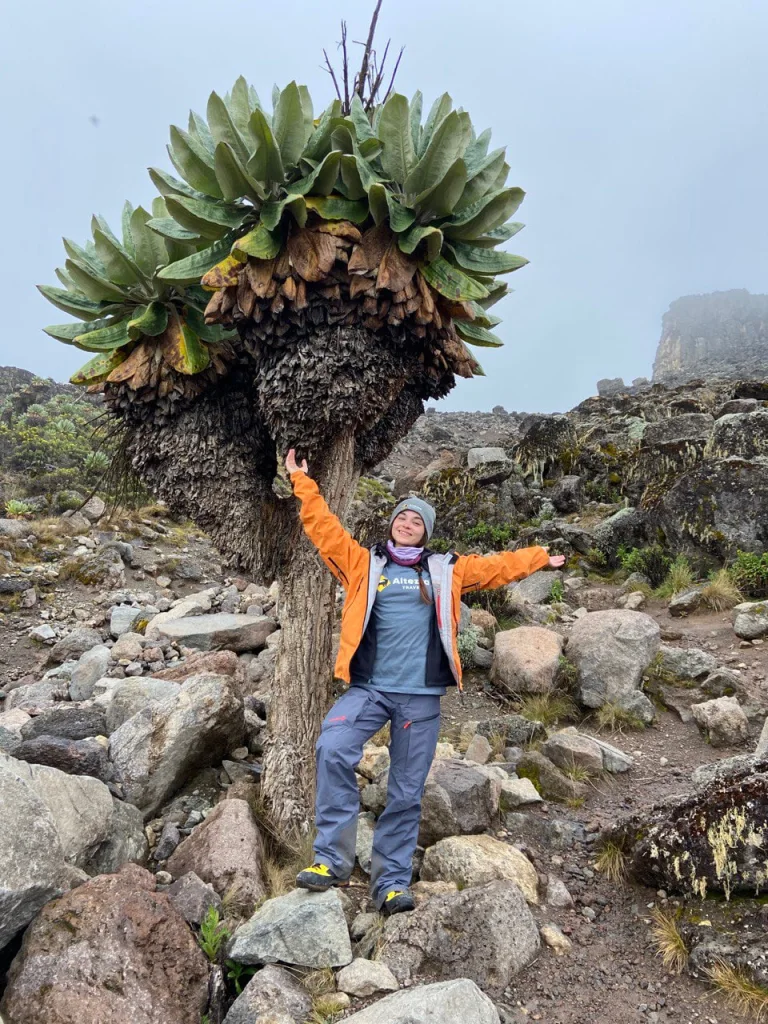



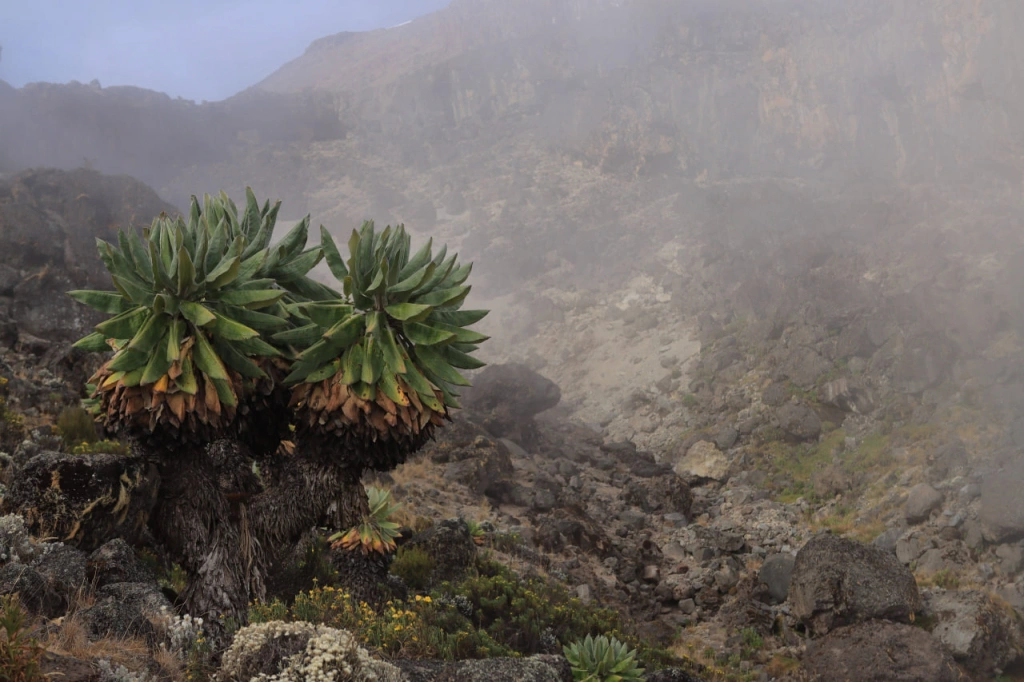
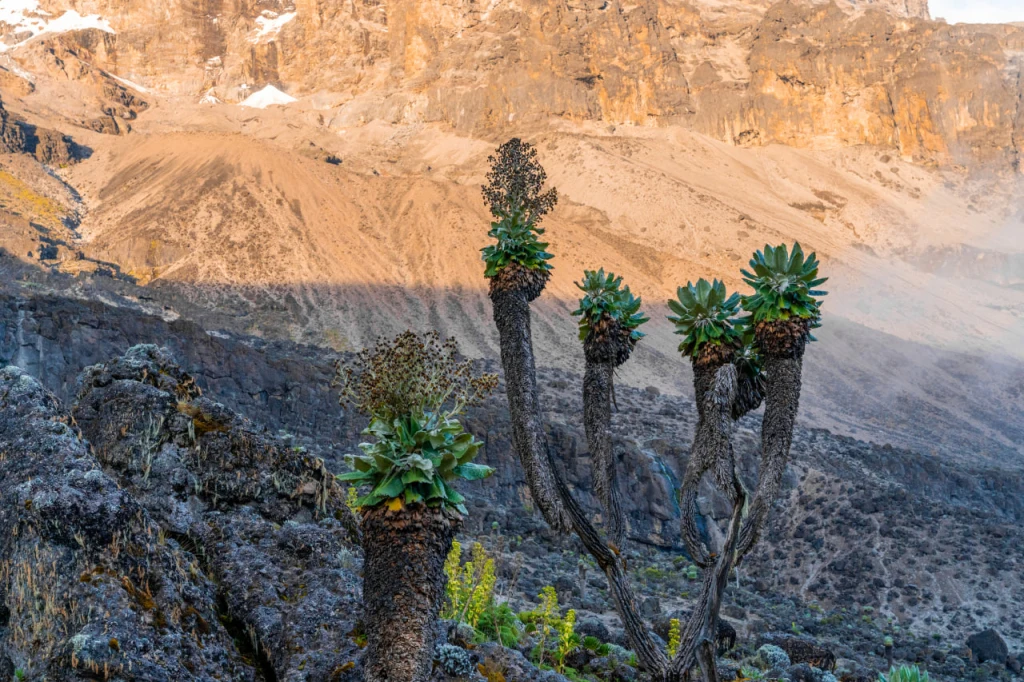

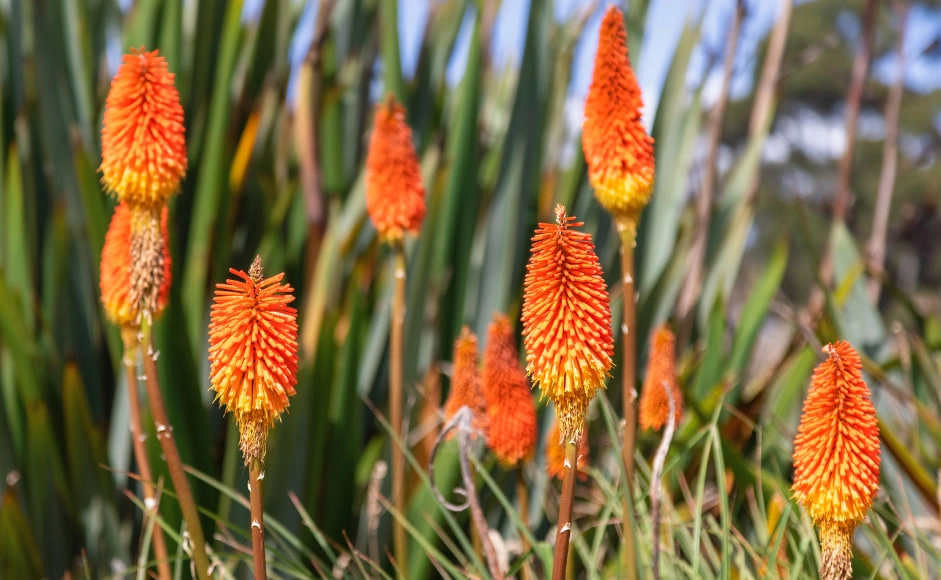



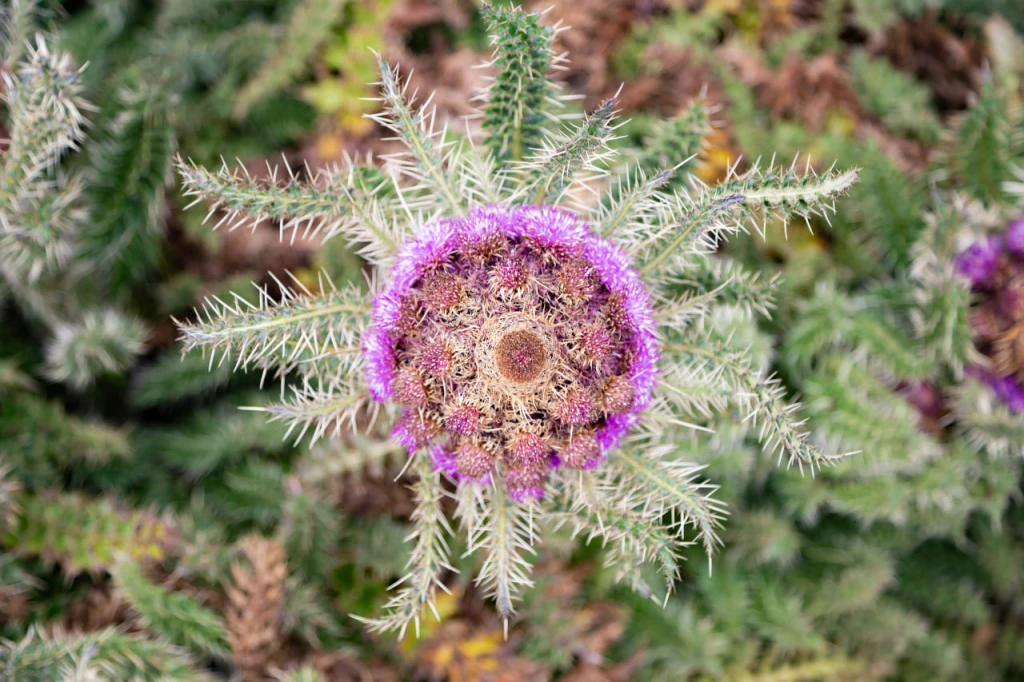
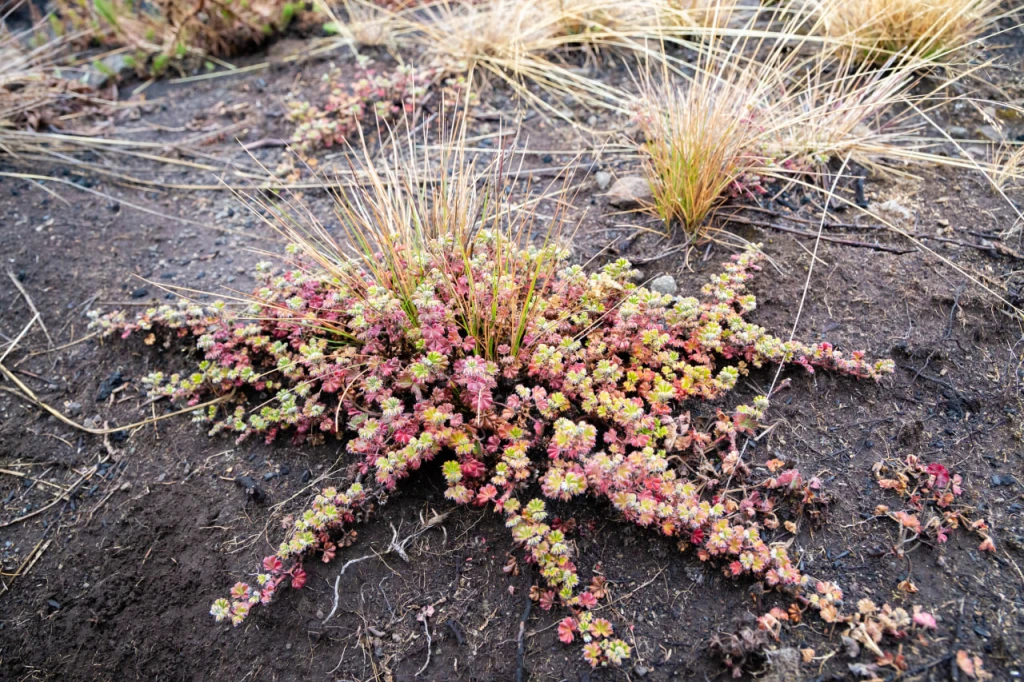

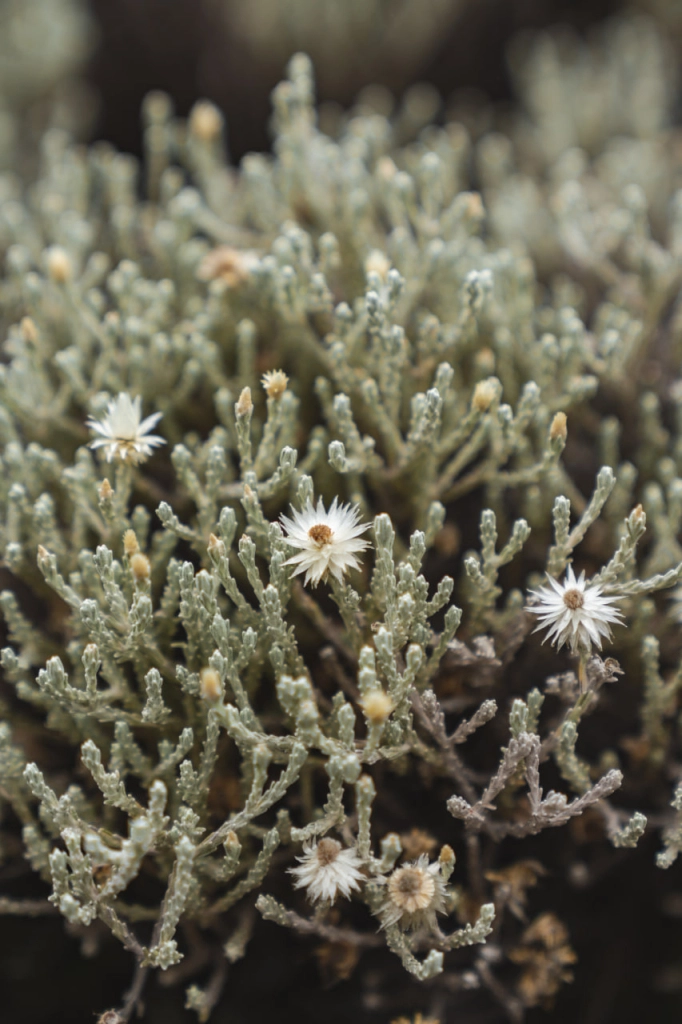


The best routes to see Dendrosenecios are Lemosho or Machame. You will see those amazing plants from day 2-3.